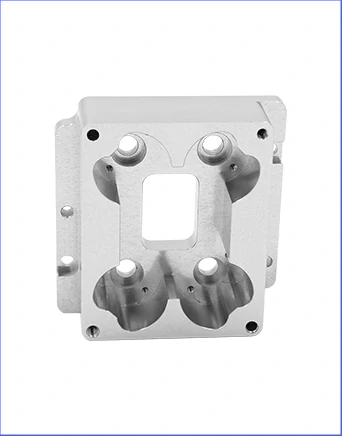Time to read: 6 min

Understanding Undercut Machining
Undercut machining is a specialized technique used to create cavities or recessed surfaces in mechanical components that are not accessible by conventional straight-cutting tools. This process is essential for parts requiring interlocking features or specific assembly mechanisms.
How Undercut Machining Works
The process of undercut machining involves a series of steps, including understanding the geometry, selecting the right tools, setting up the CNC machine, executing the machining process, and conducting quality control.
Importance of Undercut in Modern Manufacturing
Undercuts play a vital role in modern manufacturing, particularly in applications requiring weight reduction, secure locking mechanisms, and pathways for fluids or gases.
Common Types of Undercuts in Machining
- T-slot Undercut: Used for fixtures and mounting slots, created with specialized T-slot cutters.
- One-sided Undercut: Targets a specific surface for precision assemblies like seals or retaining rings, using lollipop cutters.
- Dovetail Undercut: Joins two components with a wedge and recessed section, common in woodworking.
- Tapered Undercut: Features a sloping surface for tight, frictional fits in mechanical assemblies.
- Threaded Undercut: Incorporates internal threads for screwing, using specialized thread mills and taps.
- Spherical Undercut: Has a 3D curved surface for parts requiring rotary motion, machined with ball-nose end mills.
- Keyway Undercut: Houses a key for locking mechanical parts together, created with broaches or keyway cutters.
- Relief Undercut: Reduces stress concentrations around bearings or shafts, using standard undercut end mills or slotting cutters.
- O-ring Groove Undercut: Specifically cut to house an O-ring for tight seals, machined with O-ring groove cutters.
Technical Insights and Applications
Each type of undercut has specific applications, tooling requirements, and challenges. For instance, T-slot undercuts are used in fixtures and mounting slots and require T-slot cutters while considering depth control and avoiding tool breakage.
Challenges of Undercut Machining
Undercut machining presents technical challenges due to the unique geometry that requires specialized tools, which can introduce issues with stability, wear, and precise control.
Tips for Achieving Perfect Undercuts
- Choose standard dimensions whenever possible to utilize readily available tools.
- Avoid too deep features that may exceed the tool's reach or stability.
- Eliminate undercuts if possible to streamline the manufacturing process.
- Partner with professional machinists for optimized design and precise manufacturing.
Conclusion
Undercut machining is an indispensable technique for creating complex features in modern manufacturing. Although it presents certain challenges, with the right approach, tools, and expertise, it can significantly enhance the functionality and design of components across various industries.
For precision CNC machining services, including undercut machining, consider partnering with a professional service provider like Unofactpry. Our team of experts can help you design, optimize, and manufacture your components with unparalleled accuracy and efficiency.




